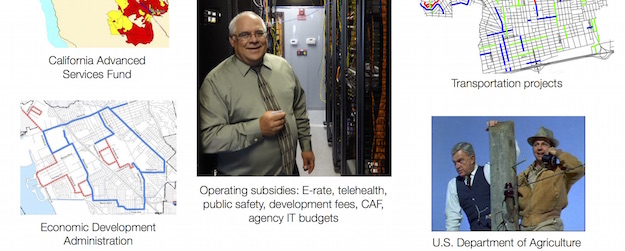I gave a presentation on connected cities and broadband planning at the American Planning Association’s California chapter’s conference in Oakland. I was on a panel with Tom Liao from the City of San Leandro, Peter James from the City of Santa Monica and Joanna Jansen, associate principal at Placeworks.
After a quick overview of what broadband really entails – digging and rigging to put it simply – I talked about tools and initiatives that city and county planners can use to promote infrastructure development. That includes dig once, open trench and shadow conduit policies that encourage the inclusion of broadband facilities in any kind of construction work done in the public right of way. Municipal fiber projects, master permits and leases, quick decisions and good maps also drive broadband development. On the down side, nimby opposition, political conflict, administrative disinterest and spiff-seeking discourage it.
You also need to figure out how to pay for broadband-friendly policies, whether it’s millions of dollars to build a fiber to the home system, as Santa Cruz plans to do, or hundreds of dollars to add another conduit or two to an existing project, as Salinas did. Often, that means being creative. Some programs, like the California Advanced Services Fund or federal agriculture department grants and loans, are already earmarked for broadband. But other sources, such as transportation agencies or the federal economic development administration, are also available to fund the right kind of construction projects. Operating budgets, paid for internally or via programs such as the FCC’s e-rate subsidies for schools, are another potential source.

